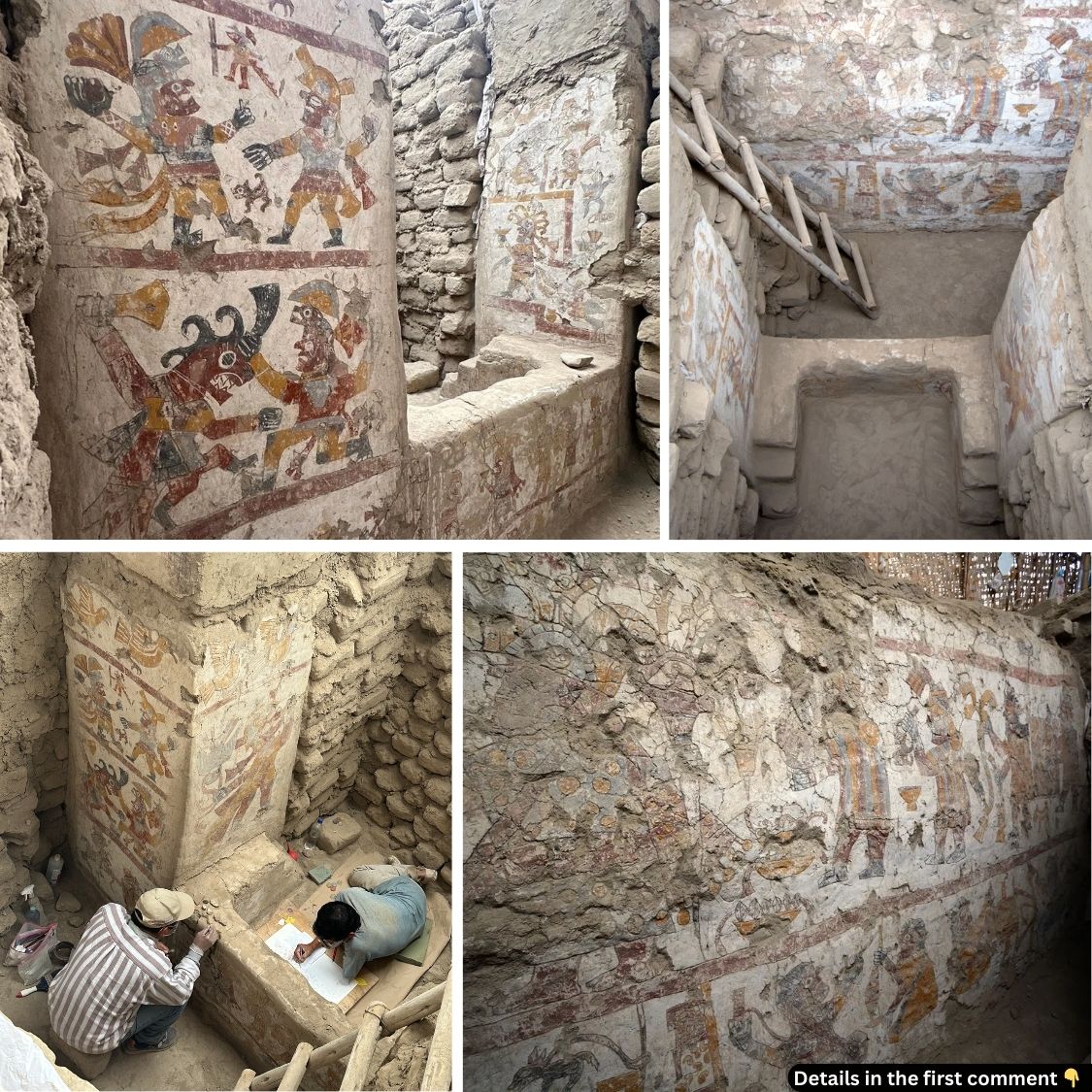In the heart of ancient Peru, the Moche civilization left behind a legacy of rich art and intriguing rituals. Among their most fascinating discoveries is a recently uncovered throne room, offering a rare glimpse into the world of a powerful female leader. Vibrantly painted murals and unique motifs shed light on the intricate rituals and societal roles of the Moche, revealing a complex world where power, art, and spirituality intertwined.
The Discovery of the Throne Room
The excavation at Pañamarca, led by a multidisciplinary team of Peruvian and U.S. archaeologists, has been ongoing since 2018. The site, which sits atop a granite hill, has yielded several important finds, including intricately painted murals that provide a window into the Moche’s complex ceremonial life. But it was during the latest season of excavation that the team uncovered a truly groundbreaking discovery: a painted throne room belonging to a powerful woman.
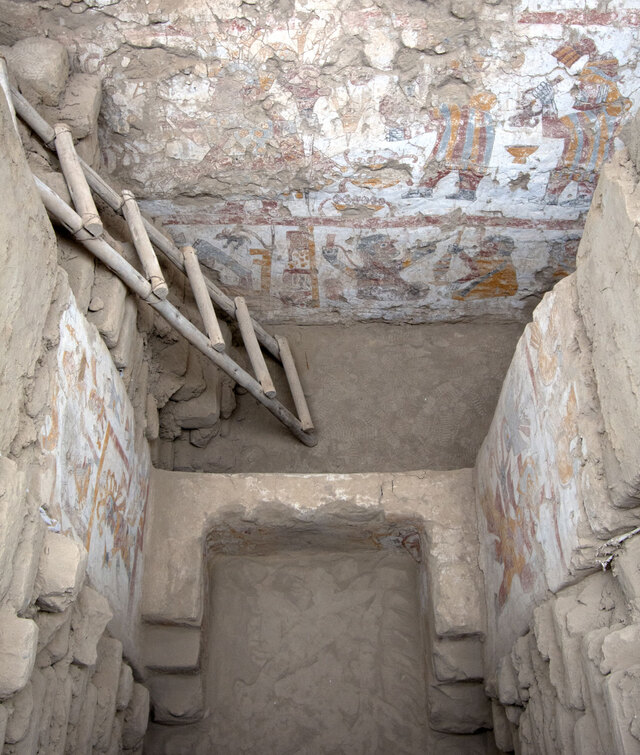
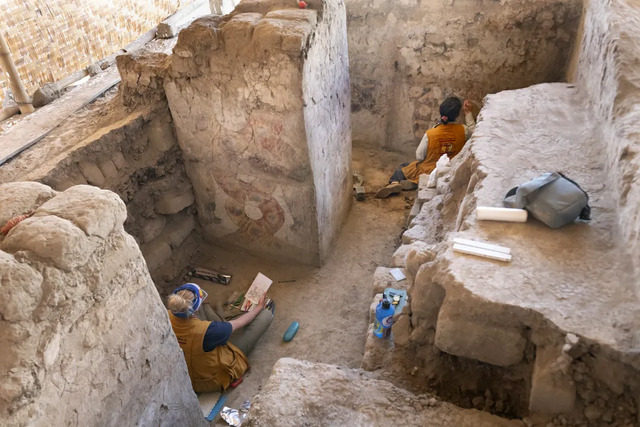
Known as the Hall of the Moche Imaginary, this adobe-pillared room is adorned with vibrant murals depicting a woman seated upon a throne. The walls and pillars of the room feature four distinct scenes of the female leader—sometimes shown receiving visitors, other times seen sitting proudly on her throne. The richness of the imagery suggests that this woman held an elite position, and the presence of symbols associated with the crescent moon, sea creatures, and weaving practices link her to key aspects of Moche religious and cultural life.
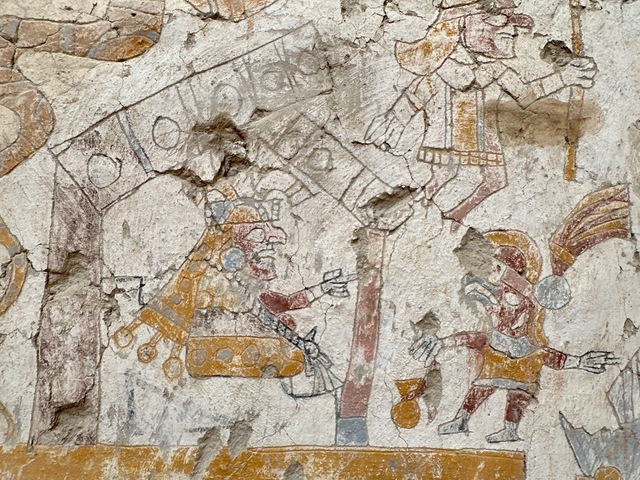
Video
Watch this video to discover the painted throne room of a powerful Moche woman uncovered at Pañamarca, shedding light on an ancient civilization.
Painted Murals and Symbolism
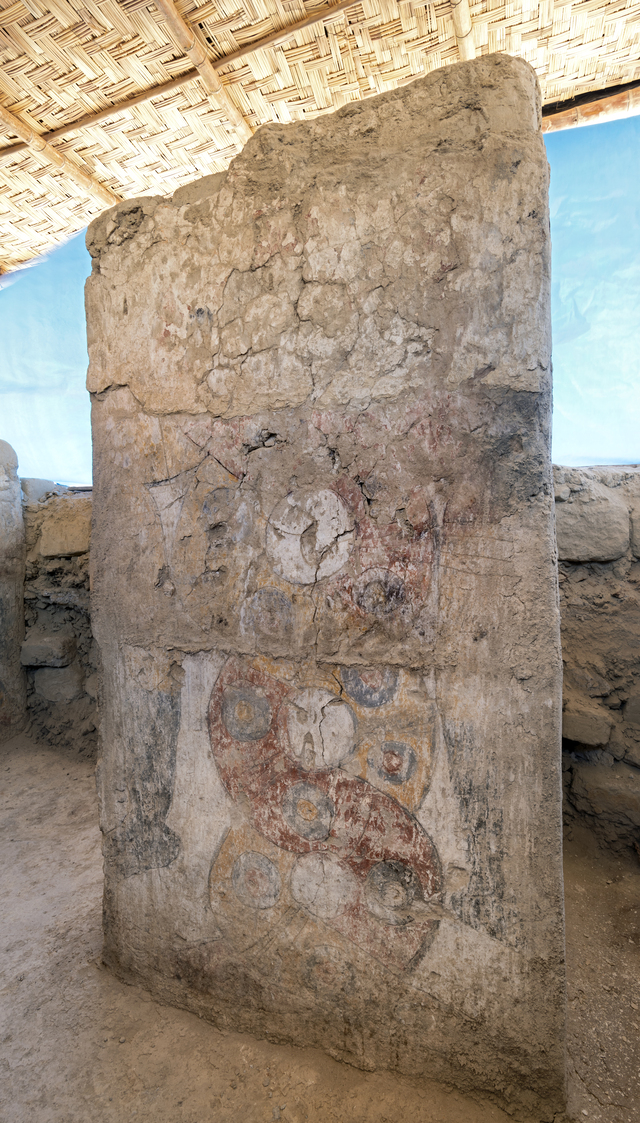
One of the most striking features of the throne room is the murals themselves. The walls and pillars are not only filled with depictions of the powerful woman but also showcase the artistic creativity of the Moche people. Symbols of the crescent moon, which was tied to the Moche’s religious beliefs and agricultural cycles, are prominent throughout the room. These references to lunar imagery could suggest that the leader was associated with fertility, harvest cycles, and the sacred elements that governed life in the arid coastal regions of Peru.
The murals also include representations of spinning and weaving activities, further emphasizing the leader’s connection to domestic and artisanal duties that were highly valued in Moche society. These activities were often linked to femininity and power, highlighting the importance of women not just in spiritual and political realms but also in the everyday workings of Moche life.
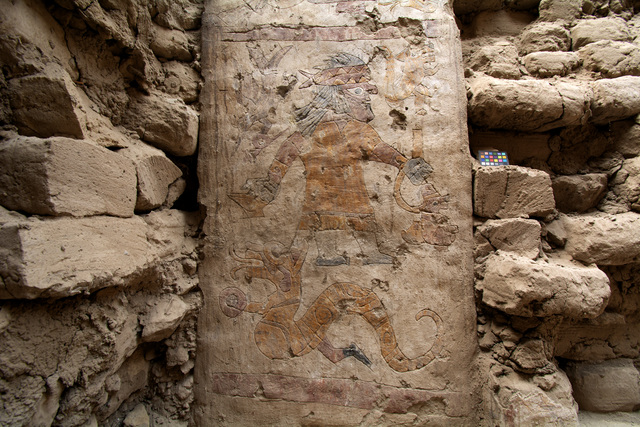
The depiction of the throne itself, along with the surrounding murals, suggests that the leader was a person of great influence. The physical wear on the backrest of the throne, the discovery of fine greenstone beads, human hair, and fine threads all point to the throne having been occupied by a real individual, most likely during the 7th century.
Who Was the Female Leader?

Scholars are still debating the identity and role of the woman depicted in the throne room. Was she a priestess, a goddess, or a queen? The evidence points to a real living person who wielded considerable political power. The murals show her in a position of authority, sometimes depicted holding a scepter or seated in an elevated position, leading processions or ceremonial events. This suggests that she may have been a ruler, likely a queen, whose status and power were reinforced through elaborate rituals and symbolic representations.

What is particularly intriguing is the way in which the murals depict this powerful woman in a range of scenes that reflect both secular and spiritual power. The Moche civilization is known for its complex religious and political structures, and the presence of a female leader at the heart of this society challenges previously held assumptions about the roles of women in ancient civilizations. It is clear that the Moche did not only revere male deities or rulers, as evidenced by the painted throne room, which is an unprecedented discovery in Moche archaeology.
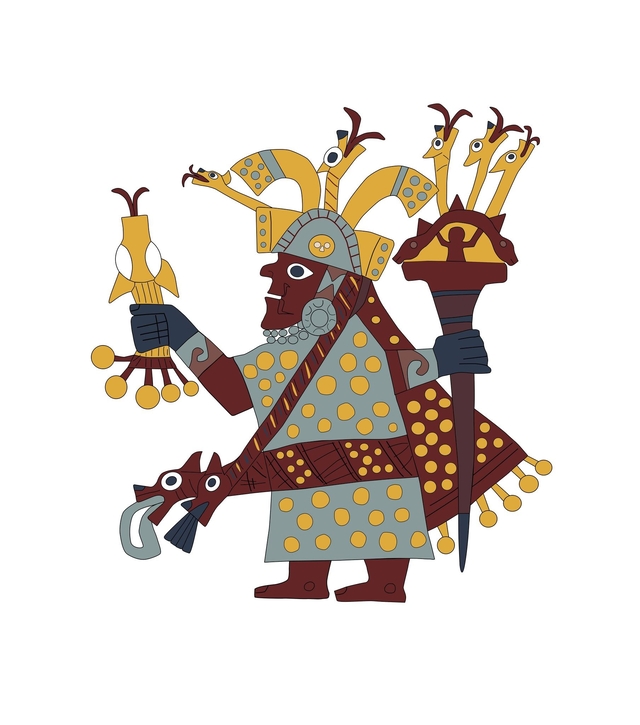
The Hall of Braided Serpents and Other Discoveries
While the painted throne room is perhaps the most significant find at Pañamarca, the excavation team also uncovered other monumental structures that contribute to our understanding of Moche culture. One of these is the Hall of Braided Serpents, located in the southern corner of the large walled plaza. This hall features murals depicting serpents intertwined with human legs—a motif that had never been seen before in Moche art.
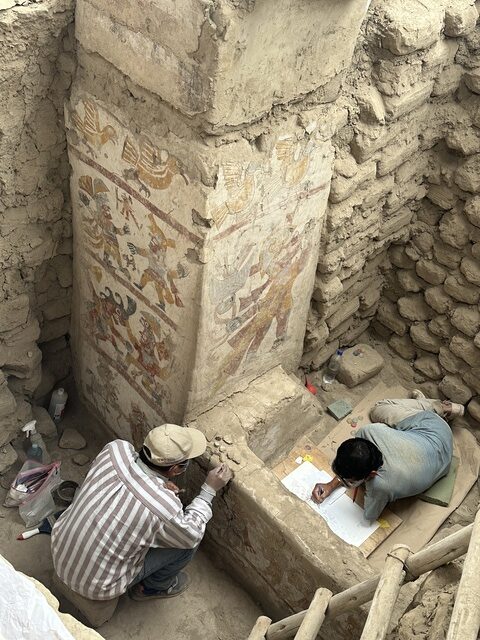
The symbolism of these serpents is thought to represent the transformative and supernatural powers associated with snakes in many ancient cultures. The hall’s walls also depict scenes of warriors, anthropomorphized weapons, and a large monster chasing a man, suggesting that this was a space dedicated to the spiritual and military power of the Moche people.
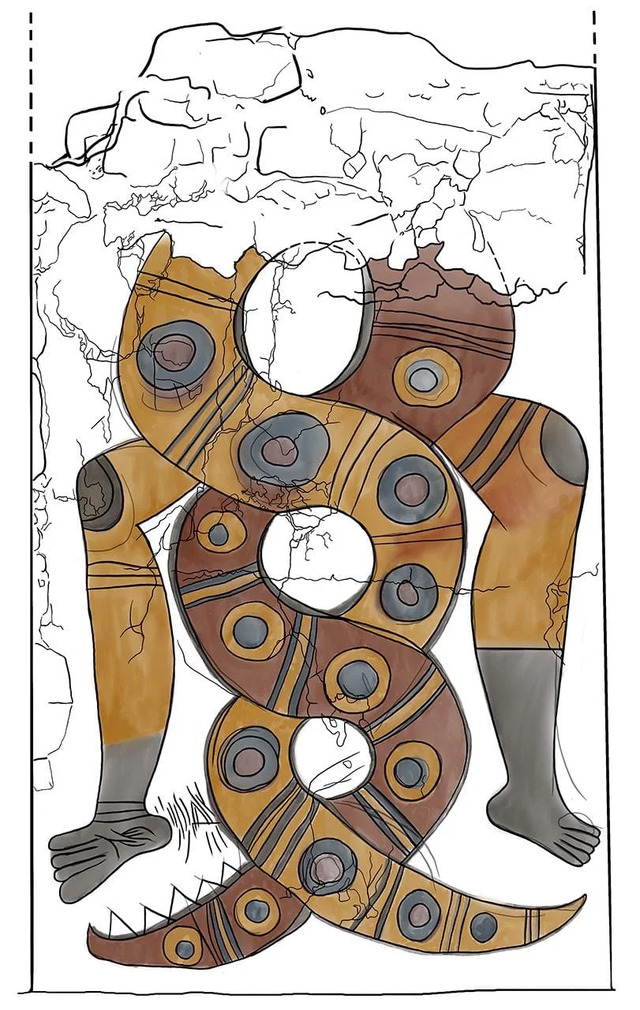
The Hall of the Braided Serpents also appears to have undergone multiple renovations, with evidence of ritual burnings, offerings, and the resurfacing of walls and floors. These activities indicate that the hall was not just a place for ceremonial functions but also a site of ongoing social and political activities.
Conservation Efforts and the Future of Pañamarca
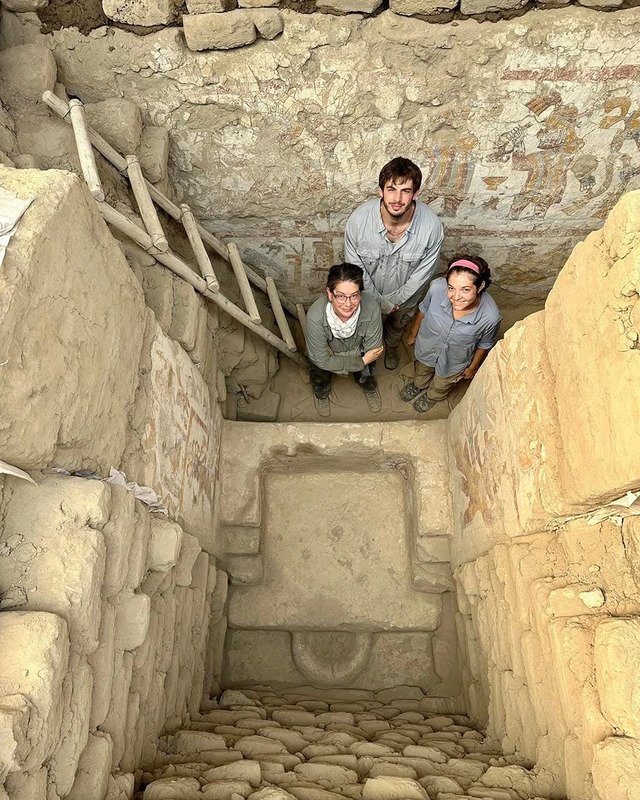
Pañamarca’s vibrant murals and intricate architecture are invaluable pieces of history, but their preservation poses a significant challenge. Due to the fragility of the murals, the team has taken extensive steps to ensure their protection. As part of their conservation efforts, the painted surfaces are covered after each excavation season to shield them from the elements. Permanent roofs and windbreaks are being constructed to prevent further deterioration, and digital preservation techniques, including 3D scanning, are being employed to create detailed records of the site.
The future of Pañamarca lies in continued research, conservation, and public awareness. The team is committed to ensuring that the discoveries made at Pañamarca are shared with the world, and they have launched a new website, Pañamarca Digital, to disseminate their findings. By using both traditional and modern methods, the team hopes to make the site accessible to scholars, educators, and the general public, while also safeguarding its rich cultural heritage for future generations.
The Cultural Significance of the Discovery
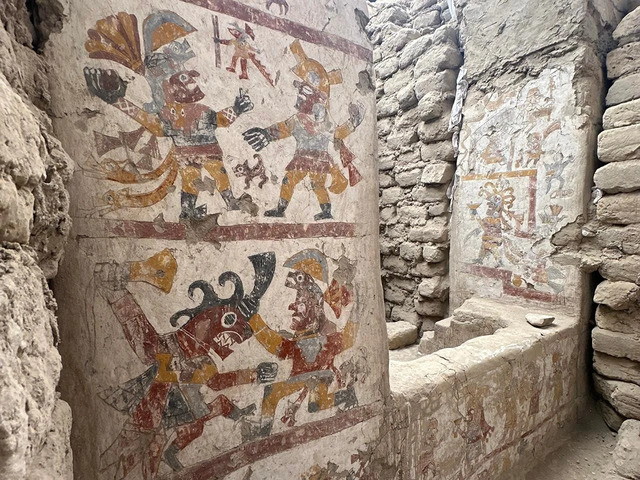
The painted throne room and other discoveries at Pañamarca challenge our understanding of Moche society, particularly with regard to the role of women. The murals suggest that powerful women in the Moche world were not just priestesses or secondary figures but actual leaders who held political and religious authority. This finding has profound implications for our understanding of gender roles in ancient societies, especially in the context of pre-Columbian cultures that often placed women in subordinate roles.
By uncovering the life and rituals of Moche women, the archaeologists working at Pañamarca are shedding light on a society that was far more complex and nuanced than previously thought. The throne room and its painted walls offer an unparalleled glimpse into the Moche world, one that is rich in symbolism, artistry, and power.
Video
Check out this video to see archaeologists uncover an extraordinary Moche throne and murals depicting a powerful female leader in Peru.
Conclusion
The discoveries at Pañamarca, particularly the painted throne room, are a testament to the sophistication of the Moche civilization. As the excavation continues, archaeologists are piecing together a picture of a society that was as intricate in its social and political structures as it was in its artistic and religious expressions.
By revealing the stories of powerful women and their roles in shaping the Moche world, Pañamarca offers a unique and invaluable insight into the lives of those who lived over 1,000 years ago. As researchers continue their work at the site, we can expect even more revelations that will further illuminate the fascinating history of this ancient Andean civilization.
